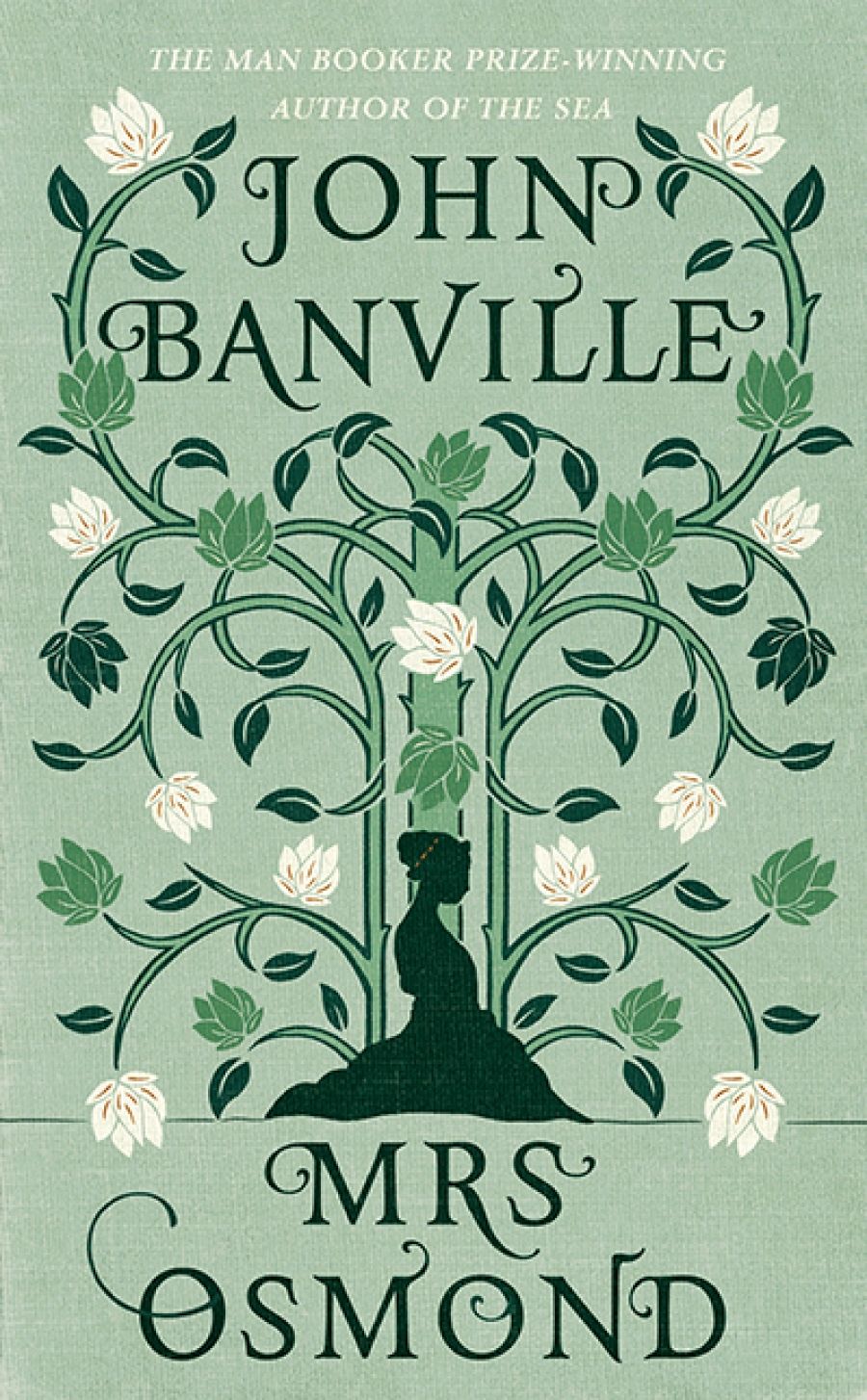
- Free Article: No
- Contents Category: Fiction
- Custom Article Title: Brenda Niall reviews 'Mrs Osmond' by John Banville
- Review Article: Yes
- Online Only: No
- Custom Highlight Text:
The last page of Henry James’s Portrait of a Lady (1881) leaves its heroine, Isabel Osmond, with an ambiguous choice. To go back into the cage of her wretched marriage might be an exercise of will for duty’s sake, or an evasion, based on fear. Readers have been disputing Isabel’s motives ever since her creator so ...
- Book 1 Title: Mrs Osmond
- Book 1 Biblio: Viking, $29.99 pb, 376 pp, 9780 241260180
First in England, then in Italy, James’s young American heroine had encountered a world of possibilities. Suitors appeared, offering love and marriage. She refused an English nobleman and an American industrialist. At the prompting of her cousin Ralph Touchett, an invalid who loved her without hope of marriage, she inherited half of his own legacy from his father. The bequest, which was intended to guarantee Isabel’s freedom, led to her disastrous marriage to impoverished expatriate American Gilbert Osmond, in whom she mistakenly discerned indifference to worldly concerns. Having refused gold and silver, Isabel opened the leaden casket of her choice, only to discover that her marriage had been arranged by a subtle, greedy schemer, Madame Merle, Osmond’s former lover. The demure young daughter of their secret liaison, Pansy, became Isabel’s special charge, her main reason for maintaining a façade of marriage in Osmond’s choice of an imposing home in Rome, the Palazzo Roccanera.
In Banville’s sequel to these events, Isabel takes a long journey from Ralph Touchett’s deathbed in England. Bound for Rome to confront her husband, she relives her past in a series of brief encounters in London, Paris, and Florence. Her journalist friend Henrietta Stackpole is ready with reproaches and advice; in a series of scenes between the two women, new readers are given the story of Isabel’s folly. Readers who know James’s novel may find this section tediously repetitive. That’s Banville’s dilemma. Is he writing a sequel or a self-contained novel? And is his prose, so reminiscent of the later James in its elaborate imagery and non-stop sentences, intended as homage, pastiche, or both? Does it topple into parody now and then? Would James approve ‘the padding, yellow-eyed, implacable creature that was Isabel’s conscience’, or an extended metaphor in which Isabel’s heart might ‘jump up, like a long-neglected pet, panting in eager recognition [but with] no happy barks or waggings of the tail’?
Isabel meets her former suitor Lord Warburton calmly – no regrets there. She evades Caspar Goodwood, who is still in relentless pursuit, but relives in memory the moment when ‘he had grasped her in his electric embrace and branded her with a kiss’. In several paragraphs of overheated prose, Banville emphasises the sexual terror that James had made plain enough.
Indulging the curiosity of James’s readers, Banville sets up other meetings. Ned Rosier, Pansy’s disappointed suitor, reappears, doing nicely as an art collector, and engaged to a wealthy young woman. Pansy herself provides another surprise. Osmond’s docile daughter has a ‘new, sharp cool manner’; she doesn’t need Isabel and won’t waste time on her. She has become ‘like her father, and her mother too’.
 John Banville (Wikimedia Commons)Isabel’s aunt, Mrs Touchett, and Osmond’s sister, the Countess Gemini, are unchanged, but Isabel’s conversations with them, and the reveries that follow, build up suspense for the climactic meetings with Madame Merle and Gilbert Osmond. What kind of revenge can Isabel exact? Before Banville answers that question, he takes a leap into the past, rather clumsily revealing through an old servant’s testimony that Osmond was no mere ‘sterile dilettante’ but an active agent of evil.
John Banville (Wikimedia Commons)Isabel’s aunt, Mrs Touchett, and Osmond’s sister, the Countess Gemini, are unchanged, but Isabel’s conversations with them, and the reveries that follow, build up suspense for the climactic meetings with Madame Merle and Gilbert Osmond. What kind of revenge can Isabel exact? Before Banville answers that question, he takes a leap into the past, rather clumsily revealing through an old servant’s testimony that Osmond was no mere ‘sterile dilettante’ but an active agent of evil.
Isabel’s revenge is uncharacteristically devious. Binding her two betrayers together by making a gift of the splendid house in Rome to Madame Merle, she makes sure that neither Merle nor Osmond will ever be free.
And for Isabel herself? A reviewer shouldn’t spoil too many of the surprises Banville has devised. Readers will notice several new characters, introduced to push the narrative in a different direction. As Isabel concluded at the time of Ralph’s death, ‘life would be her business for a long time to come’. Banville is Jamesian enough to resist closure.


Comments powered by CComment